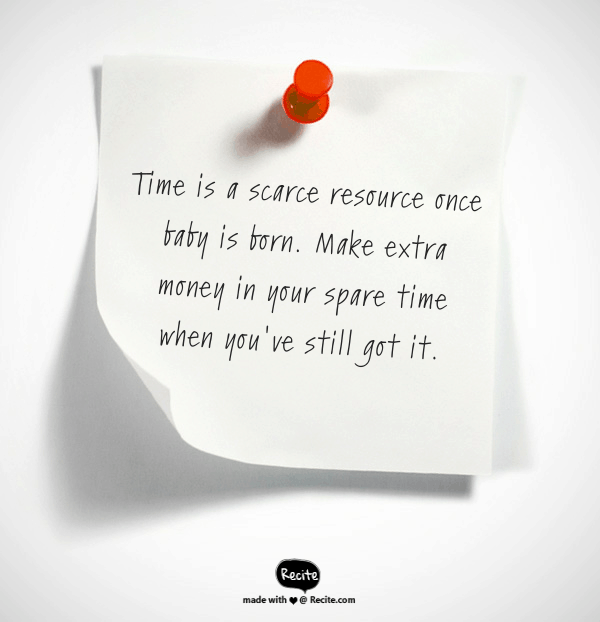
Having a baby is an experience you’ll never forget. But learning you’ll add a new member to your family also tends to bring to the surface important questions that aren’t so easy to answer.
You’ll wonder if you or your spouse can you afford to take unpaid maternity or paternity leave. You’ll start to research child care costs for day cares, in home providers and private nannies. (Then you’ll wonder how you’ll cover that cost).
As pregnancy progresses, you’ll build a collection of toys, clothes, pack and plays, cribs and playmats. Eventually, you’ll wonder if you even have room to bring a baby on board.
There’s also that question of healthcare costs. How will you budget for the new bills you’ll receive throughout your pregnancy, for child birth, and after baby is born?
All legitimate questions. But all ones you can prepare for, and answer.
Here are some budgeting tips to help manage the financial concerns you may face upon hearing the news that you’re having a baby.
Confirm your workplace maternity and paternity leave policy. Not all employers offer paid maternity or paternity leave. Not all promise to hold your job because you’ve taken time off after having a baby. And not all required to.
Under the Family Leave and Medical Act, full-time employees are entitled to take up to 12 weeks unpaid leave with job protection, including spouses in same-sex marriages. But, there’s a caveat. If you work part-time, you may not be entitled to FMLA. If you are self-employed, ditto. If you have worked for your employer for less or than a year, or work for a company with fewer than 50 employees, FMLA doesn’t apply either.
Unfortunately, no FMLA coverage and/or no paid maternity leave leaves you with few options. You can:
- Prepare not to take any maternity leave. (Which is probably not realistic)
- Negotiate leave options with your employer, which may include putting in extra hours now, or using accrued vacation time towards your leave
- Start saving aggressively now to cover the time you won’t get paid, so you have the option to take off when baby comes.
One important word of warning for my self-employed friends having a baby, or trying to conceive: You cannot use short-term disability insurance as a sort of paid maternity leave. But you’ve read in many credible places that you can? Me too. Then I personally researched the facts.
According to all the insurance agents I spoke with, pregnancy is considered a pre-planned event, even when you secure short term disability coverage before you’re pregnant. Pre-planned events aren’t covered under short term disability insurance. “If I could sell disability plans to cover pregnancy and maternity leave, I’d have retired years ago,” said one agent.
Calculate where you have to spend, and what you can change. To budget for having a baby, you need to know what you spend each month and on what, relative to your monthly take home pay. As soon as you know you’re having a baby, sit down with your spouse or partner and start tracking your money.
- Add the total monthly cost of your basic expenses that aren’t likely to change. (Costs like housing, auto loans, credit card and student debt, and utilities).
- Subtract your total monthly take home pay from the number above.
What remains is the amount of money you “theoretically” have to set aside for your maternity leave and new baby savings each month. Why theoretically? Because you likely spend money on plenty of non-essential expenses each month. A gym membership, a cell phone bill, meals at restaurants, trip to hair stylists, etc. You may not be willing to slash all these costs, but in theory, you could.
Consider what non-essential expenses you’re willing to eliminate, or at least minimize, so you can increase how much you can save for your new baby.
If your employer offers paid maternity leave of some kind, you may not need to slash expenses as aggressively. If you’ve already saved at least six months of take home pay and have little to no debt, you may have some wiggle room too. But, if you’ll take three months of unpaid leave that your employer won’t pay, you need to save to replace that income in advance.
Know exactly what you need, and where you stand. Research shows that savers are more successful when they identify exactly how much they need to save. (In total, and each month). They’re also more likely to stick to their plan when they track their progress. Approach how you’ll budget and save for your new baby in the same way.
Keep your money out of reach. When you know how much you need to save each month, establish automatic savings transfers into a savings account that pays some kind of interest, and requires no minimum account balance. You should be able to get to it within a matter of days, but not so easily that you’ll dip into it on a whim.
Use the value of your time. Time is a scarce resource once baby is born. If you have little room to save based on what you currently make and spend, try to find ways to make extra money in your spare time when you’ve still got it. Simple jobs like house sitting or pet sitting give you some extra money to set aside, with little effort and no long-term commitment.
Plan for medical costs. Pregnancy means medical bills–even if you have a completely healthy and run of the mill pregnancy, delivery and baby. Research your health insurance coverage to ensure you know exactly what services are covered, and what your out of pocket responsibility entails.
If your employer offers pretax savings plans for dependent care and you’ll use a child care provider you’ll claim on taxes, take advantage of the pretax savings.
